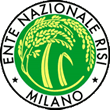RICE IN THE KITCHEN
In a kitchen where large quantities of dishes have to be prepared (in canteens, hospitals, various types of restaurants etc.), and depending on the needs, either white rice (of diverse types) or the
parboiled variety will be used.
The choice of which will depend on some important factors:
a) Cooking method called for by the recipe.
b) Amount of rice to be cooked at the same time.
c) Distribution time.
d) Serving temperature.
Parboiled rice performs well. in cooking and as such will be used when large quantities of rice have to be cooked at the Same time, especially when the grains need to be separate (salads, garnishings.
etc.); it is less suitable for minestrones or the traditional Lombardy “risotto”, both of which are characterized by a slight thickening of the liquid which is a result of the starch present in the rice.
Parboiled rice also gives a better result because it is able to absorb more liquid without over-cooking plus it has a higher nutritive value. Unfortunately, in zones where white rice has been in traditionally used some people have an aversion to the taste and smell of parboiled rice; this is mostly found in sacked rice and can be eliminated by suitable storage, placing the rice of shelving arranged in rows and placed off the ground to allow breathing and by keeping it away from other foods that could transmit odours (e.g. Potatoes) and by not keeping a stock that lasts for months.
However, a noticeable reduction of this aforementioned problem can also be obtained by washing the rice under running water for some minutes.
Whenever a large amount of portions (above 50) of “risotto” have to be cooked in the same pot and also served over an extended period (more than 10 minutes after cooking) it is advisable to use a mixture of white rice (30-40%) and parboiled (60-70%): the first to act as a binder while the second for its satisfactory cooking.
Parboiled rice can also be used when large portions of rice and vegetable minestrone have to be served over a long time and where, in this case, a larger quantity of potatoes can be used to bind the broth or on the other hand a bean puree may be used. White rice forms part of the general food culture and this is particularly so in the areas of its production, and it is more readily accepted both for its taste and aroma.
The flavour is more delicate but its nutritive value is lower than parboiled, as is the volume increase (circa 10% less) due to a different liquid absorption; exceptions to this are Carnaroli and Vialone which register a notable absorption and grain elasticity and thus support cooking satisfactorily, whereas Arborio grains, while having a good absorption, continue to swell even after cooling, so losing their shape.
White rice can be used in all types of cooking: it needs skill, a limited number of portions and varying cooking times.
It can be considered to be correctly cooked when the grains give the sensation of elasticity to the bite, are not pasty (over-cooked) and do not taste floury (under-cooked).
The cooking process should only be stopped by rapidly cooling (by the traditional method of placing under running water and applicable to boiled rice or by using, as in the large kitchens, a special appliance or by laying on a cool surface, such as stainless steel or marble, and suitable for all cooked rice); it is not sufficient to remove it from the heat as the cooking process will continue until the rice is completely cold.

